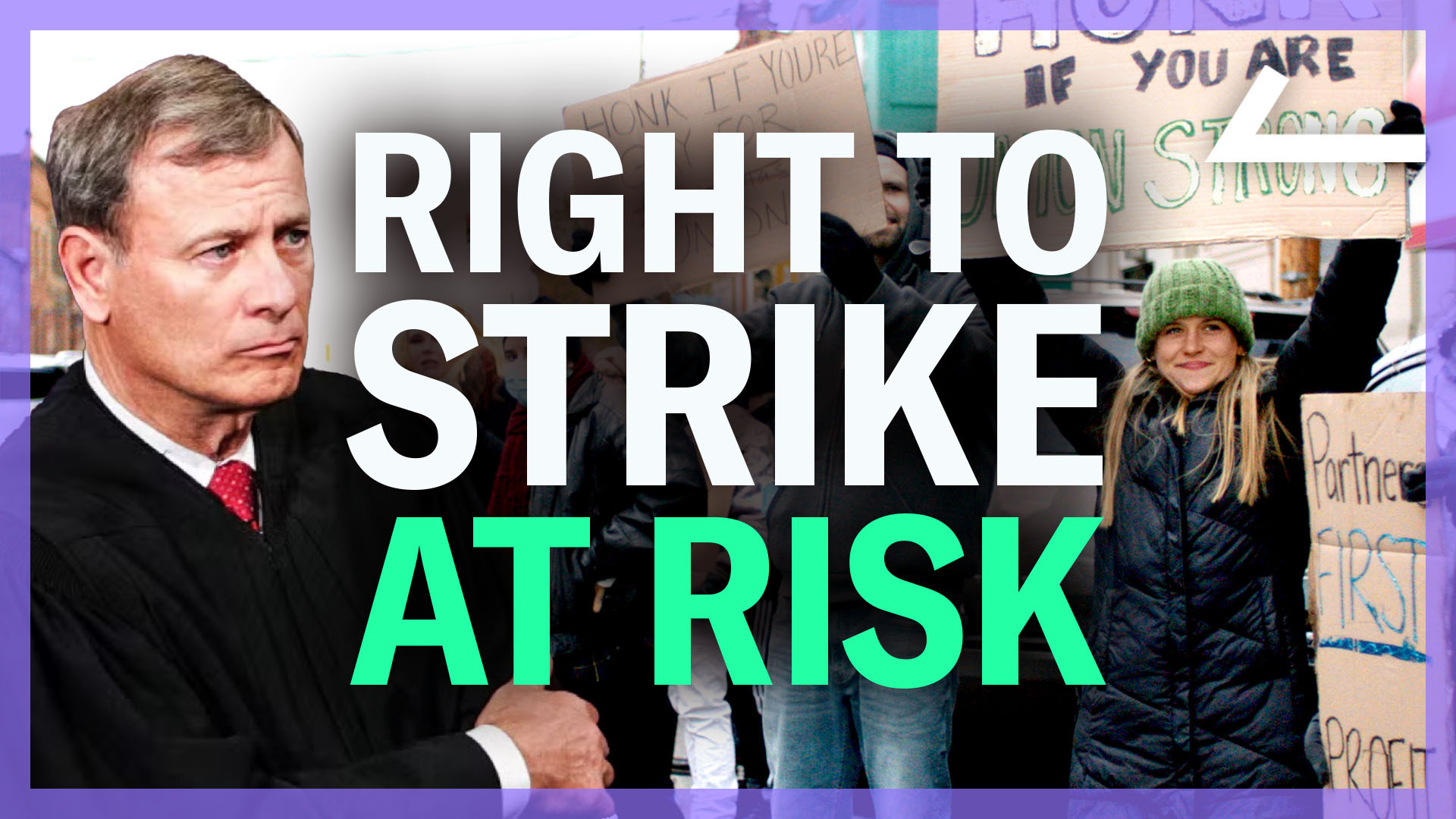Narrated by Sharon Block, Professor of Practice and Executive Director of the Labor and Worklife Program at Harvard Law School
Imagine you’re a newly-unionized Starbucks barista, discussing whether to strike. You’ve got lots to think about, but what you probably wouldn’t expect to have to consider is whether your union-busting boss Howard Schultz is going to sue you for the impact of your strike on Starbucks – for the coffee that gets wasted or milk that goes sour or lost revenue from customers who get tired of waiting in line?
But if a Seattle concrete mixing company and the U.S. Chamber of Commerce get their way before the Supreme Court this year, that’s the crazy position that American unions are going to be in if they want to strike. And it could be devastating for workers everywhere.
The case the Supreme Court is considering is called Glacier Northwest v. International Brotherhood of Teamsters, Local Union 174. Here are the facts: After months of contract negotiations, cement mixers at Glacier Northwest decided to go on strike. They drove their trucks back to the company’s headquarters and walked off the job. Workers left trucks that had already been loaded with cement running so the cement wouldn’t instantly harden inside the trucks’ drums. The strike lasted one week before the parties reached agreement on a new contract.
The issue in this case revolves around what happened next – the employer sued the Teamsters for “tortious destruction” of the company’s property. Glacier asked a Washington state court to make the Teamsters pay for damage to their trucks as a result of cement hardening after the strike began. The Washington State Supreme Court threw out the case, finding that it wasn’t appropriate to apply state law to a labor dispute covered by a federal law, the National Labor Relations Act.
The state supreme court’s decision rested on long-standing U.S. Supreme Court precedent that the National Labor Relations Board decides whether union conduct is protected by federal law or not.
This should have been the end of the story. Unfortunately it wasn’t. As we’ve seen with the super-charged conservative majority currently sitting on the Supreme Court, no precedent is safe.
To date, the Supreme Court has recognized the importance of the right to strike and allowed state law to sanction strike activity only when a union’s behavior is so egregious that striking workers have lost the protection of the federal law. Think violence on the picket line or obvious vandalism at the employer’s place of business. But in this case, there are no allegations of violence. And the drivers even tried to mitigate harm to the trucks by leaving them running. Bottom line – it shouldn’t be the union’s job to make it as easy as possible for an employer to weather a strike. The whole point of a strike is to create an economic incentive for an employer to bargain seriously with the union.
But even if this was a close case on the facts – which it isn’t — the Supreme Court still had no business hearing it. It is the job of the NLRB to decide if strike behavior is egregious or not.
So why is the Supreme Court getting involved to open the door for companies to sue unions that strike? Because this Court has shown a sustained hostility to workers’ collective bargaining rights. Just a few years ago, it reversed decades of precedent to make it harder for public sector unions to collect dues. Two years ago, it made it impossible for union organizers to talk to farm workers in the fields of California. And now conservatives are plotting to make it easier for the wealthy corporate bosses to be able to sue union employees just for asserting their constitutional right to strike.
At a time of historic levels of worker organizing and public support for unions, it is exactly the wrong time for the Supreme Court to make the right to strike harder than ever for workers to exercise. But for the Roberts Court, it seems to always be time to side with corporate employers’ efforts to undermine workers’ rights.



